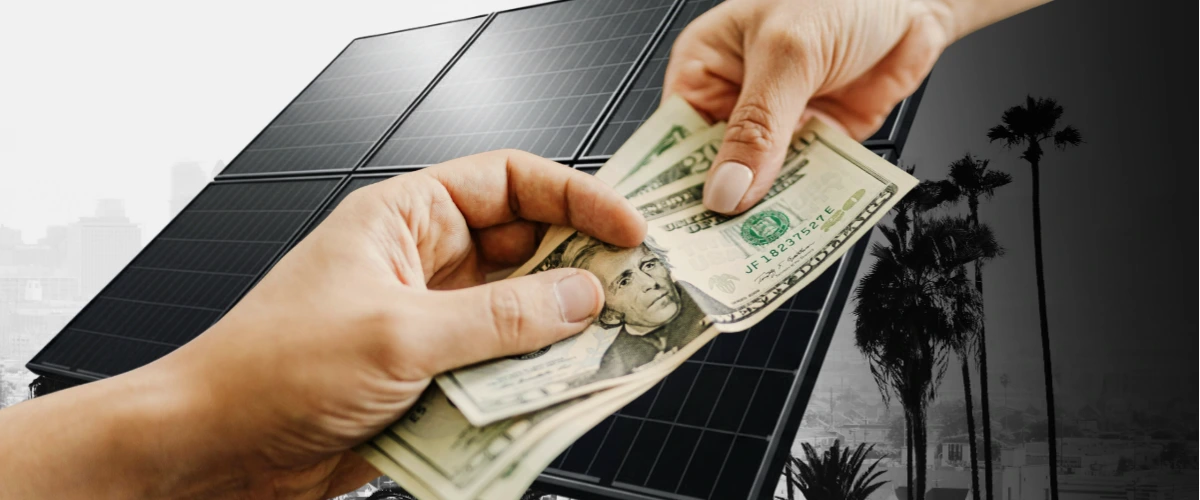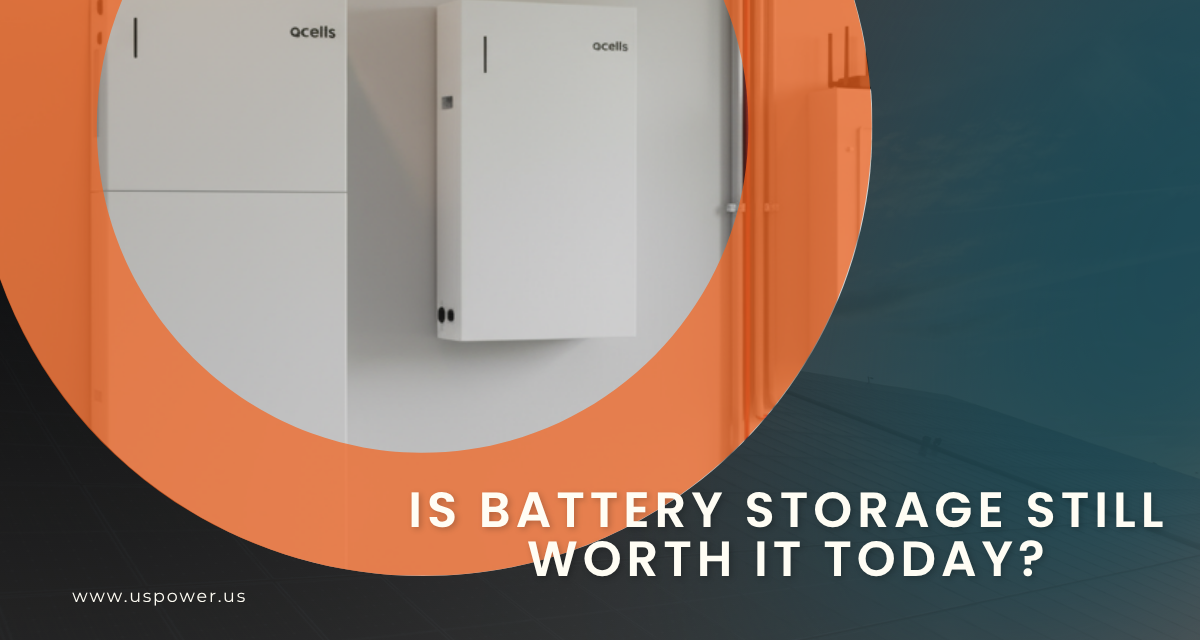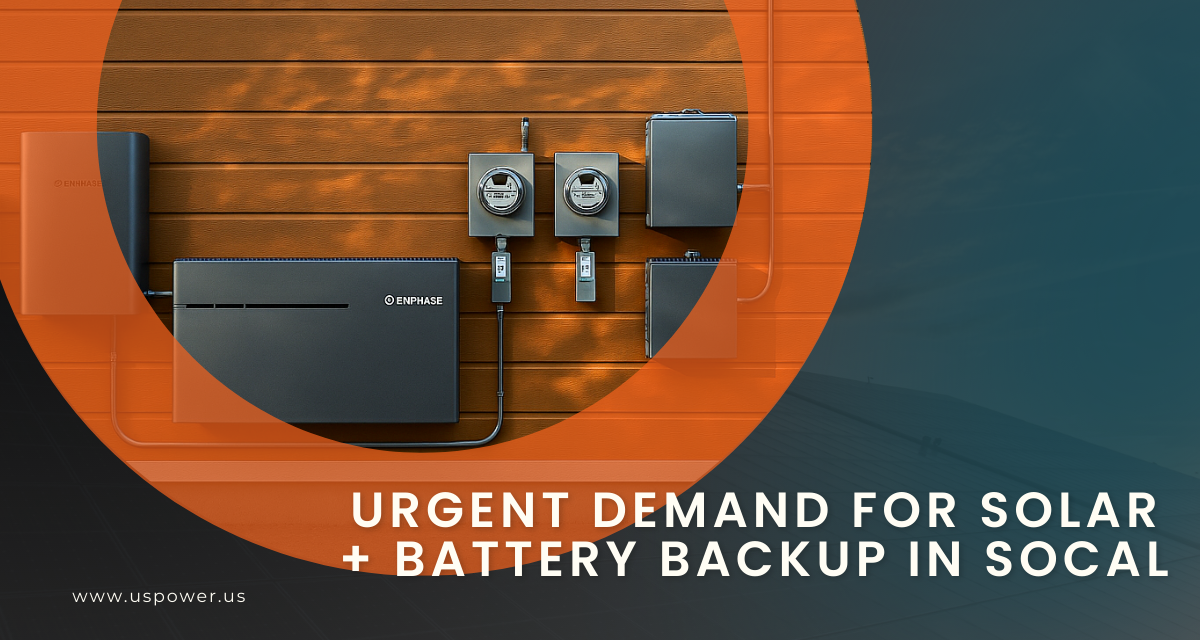Avoid Shockingly High Power Bills with Solar + Battery Storage

Solar and Roofing Advisor
Sudden electricity spikes can drive up bills fast. QCells solar + storage helps homeowners store energy through US Power, avoid peak rates, and save in SoCal.

If you’re a Southern California homeowner and you recently saw your electricity monitor flash a massive surge — say, 8,000 W (8 kW) or even more — don’t panic. Sudden spikes in wattage usage are surprisingly common, and the root cause is often a combination of high-draw appliances running at the same time, not a faulty meter (though that’s still worth ruling out).
From a Reddit thread where one homeowner expressed alarm over an 8 kW spike, the consensus from experienced users was clear:
“8 kW is not strange at all. I regularly go above 15 kW when cooking breakfast.” —u/shikkonin
…
“Think it was the combination of the HVAC, microwave, water heater and dryer. … Lasted maybe 5 mins.” —OP
A few important takeaways:
- High-draw appliances add up fast. Induction stovetops can draw up to 10 kW, ovens around 3–4 kW, electric kettles another 3 kW, dishwashers 2 kW, washing machines ~2.5 kW, and more. When many of these run simultaneously—or even in short bursts—you can easily hit 8 kW, 10 kW, or more.
- Duration matters. In the Reddit case, the spike lasted about 5 minutes. That’s short enough to feel scary, but it rarely translates to massive energy consumption over a billing cycle.
- Behavior underestimation. Most people think they’re using only a few appliances, but reality often surprises them—especially when HVAC, water heaters, or dryers kick in randomly.
This is especially concerning in Southern California, where electricity costs are among the highest in the U.S.
According to recent data, the average residential electricity rate in California is around 31–32 cents per kWh.
Why Sudden Spikes Can Lead to Big Bills — Even With Solar
If your home is on a traditional grid-only setup, these consumption spikes immediately translate to higher bills. But even if you have solar panels, there are some hidden traps — especially under California’s current net billing structure, NEM 3.0.
- NEM 3.0 pays very little for excess solar sent to the grid. Under the current Avoided Cost Calculator (ACC), when your panels generate more than you use, the utility may credit you only around $0.047/kWh, which is a small fraction compared to retail rates.
- Peak-hour electricity is expensive. During peak hours (often evening), utility rates can spike, making imported electricity costly. Without storage, you may be forced to draw from the grid when your solar isn’t producing.
- Battery storage can radically shift the value equation. With a home battery system, you can store excess solar during the day and use it in the evening, avoiding high-cost grid power.
How QCells Solar + Battery Can Help You Lock In Savings
This is where a solar + storage system really shines—and where US Power can deliver unbeatable value. Here’s how:
- Factory-direct pricing on QCells panels
Our exclusive partnership with QCells allows us to offer American-made, high-efficiency panels at lower costs. - Battery storage maximizes value under NEM 3.0
By adding a battery, you can avoid selling your excess solar at the low ACC rate and instead use that power for your own home when it's most needed. - Protect against future rate hikes
California’s electricity rates have historically trended upward. By producing and storing your own power, you insulate yourself from future spike risk.
Incentives in 2025: Why Now Is a Smart Time to Go Solar + Battery
There are powerful financial incentives available to make solar + storage far more affordable. In fact, for many Southern California homeowners, the upfront cost is much lower than you might think—especially if you act now.
1. Federal Solar Investment Tax Credit (ITC)
The 30% federal tax credit still applies for eligible systems installed by the end of 2025 (US Power ITC guide).
2. California SGIP (Self-Generation Incentive Program)
n June 2025, California launched a new $280 million SGIP program targeting paired solar + storage systems (SGIP program details).
- Rebates can be $1,000–$1,100 per kWh of storage under the Equity or Resiliency budget.
- For a typical 13.5 kWh battery, that could mean $13,500–$14,850 in incentives.
3. Active Solar Energy System Exclusion
Solar systems installed in California may be excluded from property tax assessments, reducing increases in property taxes.
Real-World Payback: What Your Savings Could Look Like
Using recent analysis for a typical SoCal home with a 5 kW solar system plus storage, here’s how the numbers break down:
| System Type | Estimated Net Cost* | Annual Electricity Savings | Estimated Payback Period |
|---|---|---|---|
| Solar-only | ≈ $15,820 | ≈ $1,800/year | ~ 8.8 years |
| Solar + Storage | ≈ $24,715 | ≈ $2,800/year (plus some SGIP costs) | ~ 7.8 years |
*After applying federal tax credit and relevant state incentives.
Over 25 years (assuming utility rates rise ~4.1% annually, solar panels degrade 0.5% per year):
- Solar only: ~$85,000 in total avoided electricity costs → net profit ≈ $69,000
- Solar + storage: ~$125,000 in savings → net profit ≈ $109,000
Addressing Your Spike Problem — Solar + Battery Can Help Prevent Future Shock Loads
Let’s circle back to where we started: that frightening 8 kW (or higher) usage spike. Adding QCells solar + home battery storage through US Power can help:
Here’s how adding QCells solar + home battery storage through US Power can help:
- Buffer for big-load events
When your AC, dryer, oven, or other high-draw appliances kick on, your battery can supply some or all of that power. That means less demand from the grid, especially when rates are highest. - Smoother self-consumption
During sunny hours, your panels generate more than you might need — without a battery, that excess goes to the grid for a low ACC rate. With storage, instead of exporting, you capture and store that energy for later. - Resiliency during outages
If you’re in a fire-prone or high-risk area, battery storage not only saves you money — it gives you backup power when the grid goes down. - Better ROI over time
Because batteries improve your self-consumption and reduce costly peak-hour imports, your system pays for itself faster and generates more long-term savings.
Common Concerns (and Why They Shouldn’t Hold You Back)
| Concern | Why It’s Less Risky Than You Think |
|---|---|
| “I don’t use that much electricity.” | Even if your typical load is low (say 600 W–2 kW), occasional spikes — like those Reddit users reported — can still drive up bills. Storage helps smooth that out. |
| “What if incentives run out?” | Incentives like SGIP are time-limited and subject to funding. But a system installed now can lock in current rebates + the 30% ITC, making now a smart time to act. |
| “NEM 3.0 gives me very little for exporting. Is solar still worth it?” | Yes — especially with storage. The value shifts from exporting to self-consuming, and a good battery makes all the difference. |
| “Batteries are expensive. Isn’t it cheaper just to use grid power when needed?” | Not with peak rates. Grid power during peak hours can be very expensive, and self-stored solar lets you avoid that. Add in SGIP, and the net cost can be surprisingly low. |
How to Move Forward With US Power + QCells
- Get a free energy audit or usage assessment
We’ll help you understand your home’s load profile — including those surprise 8 kW spikes — and design a system sized to match. - Review incentive eligibility
We’ll check whether your home qualifies for SGIP rebates, the federal tax credit, and other offers. - Customize your system
Choose a QCells solar array + battery storage sized for your needs and budget. - Lock in pricing and incentives
With factory-direct QCells pricing + US Power installation, you can secure attractive cost terms. - Install and enjoy lower bills + peace of mind
Once installed, your system will start cutting your reliance on the grid — especially during peak usage — and begin generating valuable savings.
For many Southern California homeowners, a sudden 8,000 W (or greater) usage spike can seem alarming — but it’s often just the combined load of several appliances running together, sometimes for only a few minutes. The real risk isn’t necessarily damage to your system; it’s higher electricity bills, especially under today’s high utility rates.
By combining high-quality QCells solar panels with a residential battery storage system, homeowners can:
- Smooth out those high-draw spikes
- Avoid costly grid electricity during peak hours
- Tap into generous 2025 incentives like the SGIP rebate and federal tax credit
- Build long-term resiliency and energy independence
At US Power, our goal is to help you design and install a system that doesn’t just reduce your monthly bills — it protects you from future rate instability and gives you real control over your energy usage.
Ready to turn your energy worries into long-term savings?
Schedule an appointment today — and find out how much you could save with our QCells solar + storage solution.
Artículos relacionados
Nuestros blogs relacionados
Maximize your 2025 solar ROI with compliant, reliable home battery storage.
California’s new solar rules, it’s no longer enough to just go solar— storage is key.
Rising rates and outages drive SoCal homeowners to secure solar with storage.
Nuestros socios de marcas de energía solar y techos








Empoderamos a las comunidades y las empresas para que aprovechen las energías limpias y renovables energía solar soluciones que impulsan el crecimiento sostenible.
Derechos de autor © 2025 US POWER | Energía solar y techosUS Power - Axia by QCells. All Rights Reserved.
La privacidad es importante para nosotros, por lo que tiene la opción de deshabilitar ciertos tipos de almacenamiento que pueden no ser necesarios para el funcionamiento básico del sitio web. El bloqueo de categorías puede afectar a su experiencia en el sitio web.
Imprescindible
Estos elementos son necesarios para habilitar la funcionalidad básica del sitio web.
Personalización
Estos elementos permiten que el sitio web recuerde las elecciones que ha realizado (como el nombre de usuario, el idioma o la región en la que se encuentra) y proporcionan funciones mejoradas y más personales.
Mercadeo
Estos artículos se utilizan para ofrecer publicidad que sea más relevante para usted y sus intereses.
Analítica
Estos elementos ayudan al operador del sitio web a comprender cómo funciona su sitio web, cómo interactúan los visitantes con el sitio y si puede haber problemas técnicos.
Nosotros y nuestros socios externos utilizamos cookies y otras tecnologías para mejorar y rastrear su experiencia en este sitio, realizar análisis y personalizar el marketing para usted. Al usar el sitio, aceptas que usemos estas tecnologías, incluido el registro y el monitoreo de tus interacciones con el sitio.
¡Obtenga una estimación solar instantánea usando el satélite!










